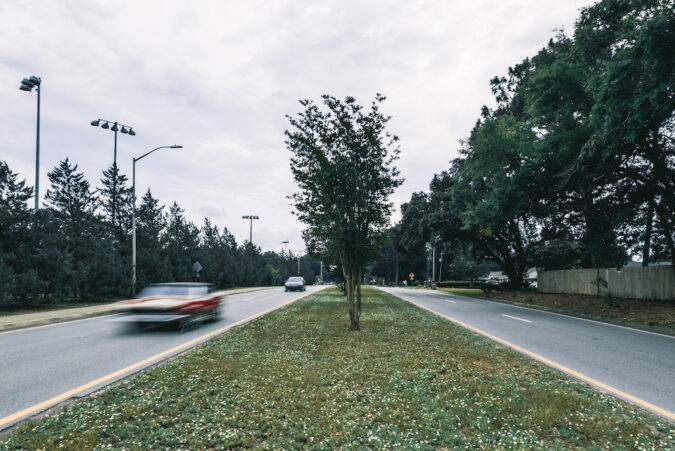
By Phil Nickinson
We need to make up our minds. Do we want our streets to be slower and safer? Or faster and more dangerous?
On the north side of Pensacola International Airport, the City of Pensacola in recent years has taken a couple of reasonably small steps to (theoretically) help slow the traffic on Langley Avenue from the airport east to Spanish Trail. We won’t actually know how well it worked until some sort of follow-up traffic study is conducted; anecdotal evidence is as likely as not to confirm folks’ prior beliefs.
On the south side of the airport, the City is now contemplating reworking Summit Boulevard and has held two public open houses to receive feedback “gather input from the community.” As was the case on the other side of the airport, this has been deemed controversial and divisive, as if the ability to find someone against something is a rarity in 2023.
What’s sorely missing in the Summit Boulevard discussion is this: Data already show that the four-lane Summit — from 12th Avenue to Spanish Trail — is grossly underused when compared to nearby two-lane roads.
That’s actually a good thing. The western end of Summit abuts homes on one side, medical facilities, baseball and football fields, a major city resource center, and the Roger Scott Tennis Center on the other. That’s all within view to a major entrance and exit for Cordova Park Elementary and its 633 students. Filling Summit Boulevard with more cars won’t benefit any of those places, or the people who use them or live there.
Let’s look at those numbers. From the 2022 Florida Department of Transportation’s annual average daily traffic data, Summit Boulevard sees just 5,500 cars a day on its four lanes. Compare that to:
? 14,000 cars on the two-lane Scenic Highway from Hyde Park to Summit
? 11,000 cars from on Scenic Highway from Summit to Langley Avenue
? 12,000 cars on the two-lane Langley Avenue
? 11,400 cars on the two-lane Bayou Boulevard from 12th Avenue to Firestone Boulevard
? 10,200 cars on Bayou Boulevard from Firestone to Hyde Park Road
? 7,100 cars on the two-lane Spanish Trail on the east side of the airport
Those numbers don’t take into account accidents and injuries both recent and historical. The simple fact is that there’s more road than is needed.
So what to do with that extra space? One option is nothing. Leave things the way they are, which is fine to folks who fear they’ll be losing something that the numbers show they’re not actually using.
The other options are to reduce the number of lanes and use that extra space for more parking, or for bike lanes. Leaving aside the irrational hatred of groups of cyclists in funny shorts and tight shirts, the argument that there are far more cars than bikes and therefore cars win and nothing should change should be a nonstarter. For one thing, it’s just not neighborly and reflects poorly on the people of Pensacola. We can and should do better for one another, whether we’re in cars or bikes or walking on the sidewalk.
Secondly, if you’re really against making streets safer for someone on a bicycle, ask yourself why.
The City of Pensacola appears to recognize that we can do better than the status quo. Section 3 of the recently released draft of the “Pensacola in Motion” Active Transportation Plan details using “right-sized streets” and flexible design. It notes that for streets with posted speeds greater than 30 mph and traffic volume comparable to the numbers above — like Summit Boulevard — “bike facilities should be buffered and separated” to help connect destinations.
This isn’t a zero-sum game, even though gaining bike lanes to improve safety for cyclists would, by definition, reduce the ability to zoom around someone who’s actually driving the speed limit. There’s no denying that. But it’s a misleading premise. As the numbers above show, Summit simply isn’t as busy as we like to pretend it is.
It’s fast and wide open, but not busy.
Even if you entertain that flawed premise of loss, the safety that cyclists — be they the “semi-pro” sort that the social media posts really dislike, or the families who would just prefer not to have to drive to the Roger Scott park, fields, pool, or tennis courts — would gain should far outweighs the slight annoyance of having to drive a tiny bit slower.
And as anyone who’s ever driven the more heavily traveled, two-lane Bayou Boulevard, or Scenic Highway, or Spanish Trail, or 12th Avenue already knows, there’s still plenty of speed to be had.
The numbers say as much.



